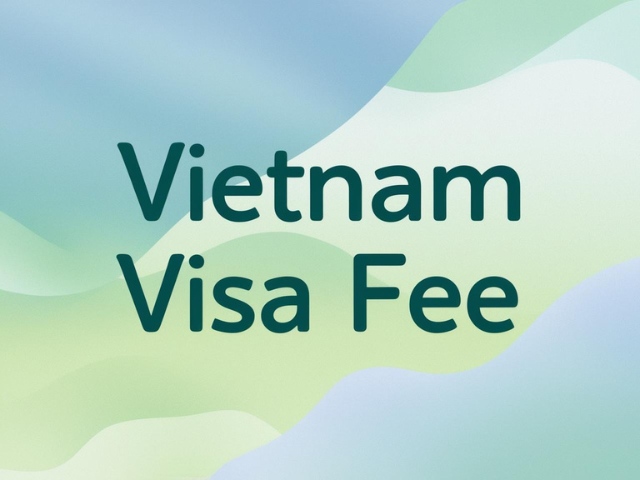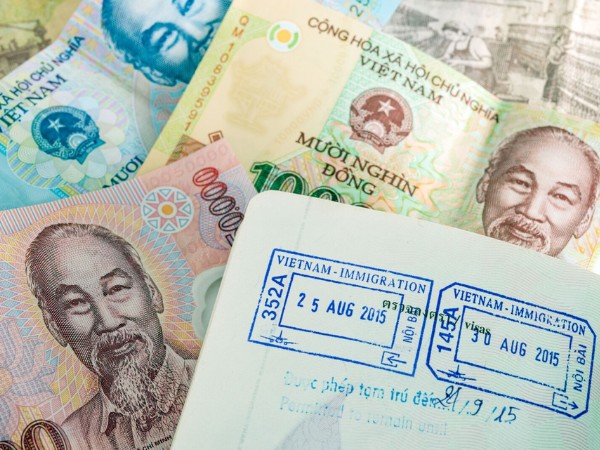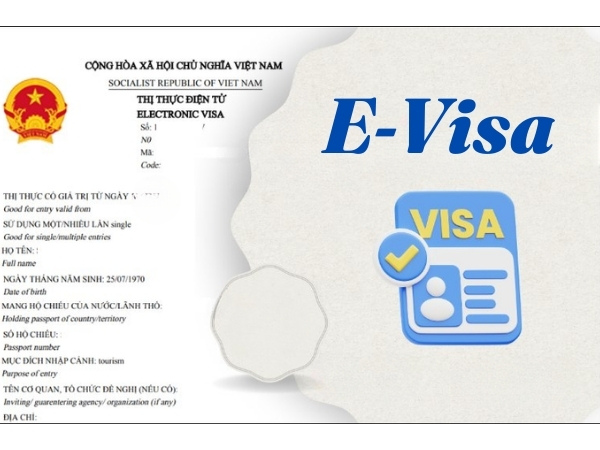Vietnam Visa Costs – Updated Fees & Application Guide 2026
Vietnam visa costs are an essential factor that foreign nationals need to be aware of when planning to enter Vietnam. These fees vary not only based on the type of visa but also depend on the purpose of use, length of stay, and selected visa processing services. Understanding visa fee details will help you better prepare financially and choose the option that best fits your needs.

Who determines Vietnam visa fees?
The Ministry of Finance is responsible for determining Vietnam visa fees and updating them regularly through official Circulars. This information is based on Circular No. 25/2021/TT-BTC, issued on April 7, 2021, and its amendment, Circular No. 62/2023/TT-BTC, issued on October 3, 2023. The latest updates took effect starting November 18, 2023.
Who pays Vietnam visa costs?
In most cases, Vietnamese employers bear the visa expenses for their employees. For tourists, visa fees are generally paid directly by foreign visitors either at the airport or through the online e-visa system.
Who collects Vietnam visa charges?
- Several authorized institutions in Vietnam are tasked with collecting visa fees, including:
- The Immigration Management Department under the Ministry of Public Security;
- Police authorities and Border Guard Commanders at provincial and city levels;
- The Department of Consular Affairs and the Department of Foreign Affairs in Ho Chi Minh City under the Ministry of Foreign Affairs;
- Police authorities in districts, towns, and cities; and
- Police offices in communes, wards, and towns that have the capability to issue immigration documents.
Vietnam Visa Costs: Pricing Table
Foreign citizens can enter Vietnam with various types of visas. Therefore, when applying for a visa, it is important to thoroughly research Vietnam visa fees, as they vary depending on the purpose of entry.
1. TOURIST VISA FEES (DL)
| SERVICE FEE FOR 1 PERSON | ||
| Services | 1 & 3 Month Single Entry | 1 & 3 Month Multiple Entry |
| 5 business DAYS | $55 | $85 |
| 3 business DAYS | $70 | $95 |
| 2 business DAYS | $75 | $105 |
| 1 business DAY | $95 | $120 |
| 4 working HOURS | Call [available] | Call [available] |
| 2 working HOURS | Call [available] | Call [available] |
| 1 working HOUR | Call [available] | Call [available] |
| 30 MINS Last minute service | Call [available] | N/A |
| Weekend/Holiday | Call [available] | N/A |
2. BUSINESS VISA FEES (DN)
| SERVICE FEE FOR 1 PERSON | ||
| Services | 1 & 3 Month Single Entry | 1 & 3 Month Multiple Entry |
| 7 business DAYS | Call | Call |
3. VISA STAMP FEE
| Type of Visa | Days Stay | Stamp Fee |
| eVisa: Single & multiple entry | Up to 90 days | Not required |
4. DEFINITIONS
Below are the definitions related to Vietnam visa services, classified based on processing time. Depending on your needs and urgency, you can choose a service that best suits your requirements.
- Normal Service: For those who would like to get a Vietnam visa within 5-7 days of working.
- Quick Service: For those who would like to get a Vietnam visa within 2 days of working.
- Urgent Service: For those who would like to get a Vietnam visa within 8 working hours.
- Super Urgent Service: For those who would like to get a Vietnam visa within 4 working hours.
- Emergency Service: For those who would like to get a Vietnam visa within 2 working hours.
- Last minutes: For those who would like to get a Vietnam visa within 15-30 minutes.
- Overtime/Weekend/Public Holiday: For those who would like to get a Vietnam visa within the weekend and public holidays or out-of-hours working days.

Vietnam Visa Charges Guide
E-Visa for Vietnam is a game-changer in the travel industry with affordable Vietnam visa fees, offering convenience, speed, and efficiency like never before. With E-Visa, you can say goodbye to long waits at embassies and tedious paperwork. Applying for an E-Visa for Vietnam is a breeze—simply fill out the online form, upload your documents, and receive your visa approval via email. Whether you’re planning a leisurely vacation or a business trip to Vietnam, E-Visa makes the process smooth and stress-free. Don’t miss out on the opportunity to explore this beautiful country hassle-free with E-Visa!
Currently, the most cost-effective way to obtain a visa for Vietnam is through the e-visa application process:
- If you apply directly on the official government e-visa website, the fee is $25 USD for 1-month & 3-month single entries and $50 USD for 1-month and 3-month multiple entries within 3-day processing time. This fee is non-refundable.
- If you would like to ensure a more guaranteed or timely delivery, you can apply on our website for an additional fee of 30 USD/person. If your application is not processed on time or gets rejected, we will refund your fee in full.
We’re here to assist you with any inquiries during the following hours:
- Regular Hours: Monday to Friday: 8:00 AM – 11:00 AM, 2:00 PM – 4:00 PM
- Overtime: Monday to Friday: 11:00 AM – 2:00 PM, 4:00 PM–10.00 PM
- Weekends & Public Holidays: Available on Saturday and Sunday. Updates regarding public holiday schedules will be posted on our website.
If you need to enter Vietnam urgently, Entry Vietnam Visa offers a reliable solution with its same day Vietnam visa service. This express option helps travelers get visa approval within just a few hours, perfect for last-minute business trips or unexpected travel plans. With a quick online process and dedicated support team, Entry Vietnam Visa ensures you receive your visa smoothly and on time.
See more>>
FAQs
Below, we’ve compiled answers to the most commonly asked questions to help you navigate the process with ease.
Can anyone apply for an E-Visa for Vietnam?
Yes, anyone who meets the eligibility criteria can apply for an E-Visa for Vietnam.
What are the documents required to apply for an E-Visa for Vietnam?
The required documents typically include a passport with at least six months of validity, a digital passport-sized photo, and a valid email address.

How long does it take to receive the approval for an E-Visa for Vietnam?
The approval for an E-Visa for Vietnam is usually processed within three to five working days.
How long does the Vietnam visa application process take?
The duration of the Vietnam visa application process can range from a few hours to several weeks, depending on the type of visa being requested. Preparing all necessary documents in advance can help streamline the process.
How long does it take to receive a Vietnam visa after applying?
The time required to receive a Vietnam visa after submission varies. E-visas are typically processed within a few days, while work and investor visas may take several weeks or even months, depending on the complexity of the application.
Which nationalities are eligible to enter Vietnam without a visa?
As of 2024, citizens of 25 countries can visit Vietnam without a visa for stays ranging from 14 to 45 days, depending on their nationality. For more details on Vietnam’s visa exemption policy, refer to this article.
When are refunds issued?
Refunds are given when applicants have paid fees but are found ineligible for passports, laissez-passers, or AB stamps. In such cases, the authorities will issue a refund after notifying the applicants of the outcome.
However, no refund will be issued in the following situations:
- Applicants reject the results after being deemed ineligible for passports, laissez-passers, or AB stamps.
- Applicants have paid for visas or other immigration or residence permits but are found ineligible or reject the decision.

Understanding Vietnam visa fees is an important step in planning your trip or long-term stay in the country. For the latest updates and detailed instructions, please refer to official sources or trusted service providers like Wexplore to make your visa application process as quick as possible.
>>> Readmore: Rush Vietnam Visa Services Within 15 to 30 Minutes Only

